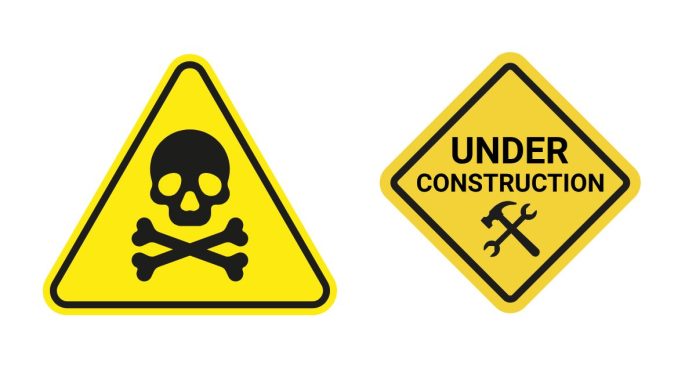What Colour Are Warning Signs Typically?
When driving or navigating public spaces, you’ve likely encountered various signs designed to convey critical information. Among them, warning signs play a crucial role in ensuring safety by alerting us to potential hazards or changes in road and environmental conditions. But have you ever wondered what color these signs typically are?
The Answer: Yellow
Warning signs are typically yellow with black text or symbols. This color combination is highly visible and easily catches attention, even from a distance. The bright yellow background serves as a universal signal for caution, making it ideal for warning people about potential risks.
Common Examples of Warning Signs
- Sharp Curve Ahead: A yellow sign with a black arrow indicating a curve.
- Animal Crossing: A sign featuring an image of a deer or other wildlife.
- Slippery When Wet: A yellow sign with a symbol showing a car skidding.
- Pedestrian Crossing: A sign warning drivers to watch for people crossing the road.
Why Yellow?
Yellow is used for warning signs because:
- High Visibility: Yellow stands out in various lighting conditions, including fog or rain.
- Association with Caution: Over time, yellow has become universally recognized as a color that signifies caution or alertness.
- Contrast with Black: Black lettering or symbols on a yellow background provides excellent contrast, ensuring that the message is clear and readable.
Other Colors and Their Meanings
While yellow is the standard for warning signs, other colors serve different purposes:
- Red: Used for stop signs, yield signs, and prohibitory messages.
- White: Regulatory signs, such as speed limits or parking rules.
- Green: Informational signs, such as directions and distance markers.
- Blue: Indicate services like hospitals or rest areas.
- Orange: Temporary warnings in construction zones.
Final Thoughts
Understanding the color coding of signs can make you a more informed and cautious driver or pedestrian. Warning signs, with their distinct yellow-and-black design, are a crucial tool for keeping roads and public spaces safe. The next time you see one, you’ll know that it’s signaling you to proceed with caution and stay alert.


